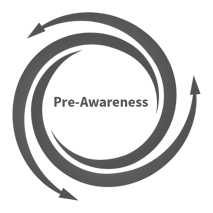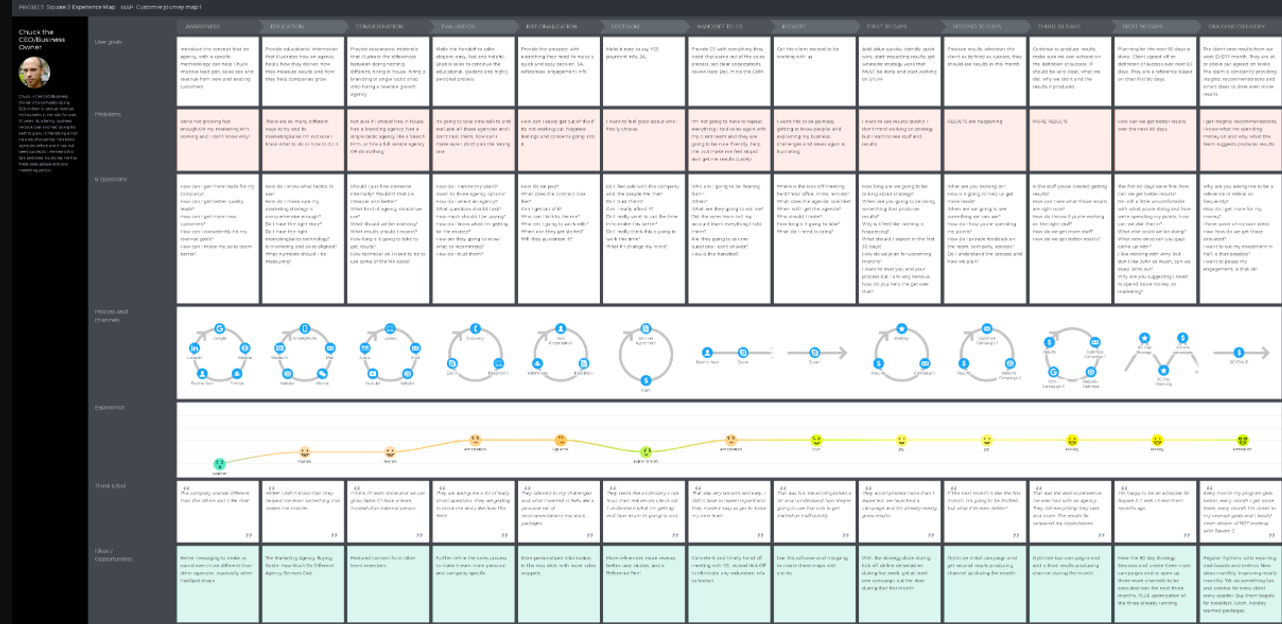
Marketing Strategy And Planning Has Changed So Dramatically
Gone Are 12-Month Plans, Dedicated Strategy Time And A Defined Set Of Deliverables
 For 15 years prior to Square 2, I worked in corporate marketing.
For 15 years prior to Square 2, I worked in corporate marketing.
Every October and November, we cleared the decks and worked on the upcoming year’s marketing strategy and plan. It took weeks to get the plan together, it was comprehensive and then it required a presentation to the management team for approval.
Once approved, the book went on the shelf, and I admit that I rarely looked at the plan again.
It’s not that we didn’t follow the plan. We did, but we also made practical adjustments to the plan in real time and never went back to update the document.
The plan did have value. It aligned everyone’s thinking so that marketing, sales, finance and operations were all on the same page. It also made senior leadership comfortable that we had a plan and that we were executing on that plan.
When we started Square 2, we wanted a similar alignment. We wanted alignment between our clients and our team. We wanted alignment around goals, and we wanted to share our recommendations with the client and get their sign-off. Primarily, I wanted our delivery team to know exactly what they needed to do, so they could do it quickly and efficiently.
Fast forward about 10 years to 2013, and it was obvious that marketing is data-driven, agencies and in-house teams have to respond in real time and any planning longer than 30 days is likely to be a waste of time. Get stuff out and respond to the data to optimize its performance.
Today, it has to work even faster. The buyer journey is chaotic. Some call it a Cyclonic Buyer Journey™, and the experience your prospects are having is everything.
How has marketing strategy and marketing planning changed so teams know what to work on, when to work on it and how to align that work so that prospects have a remarkable experience all through their buyer journey from click to close and beyond?
Here is our latest thinking.
Map Out The Prospect’s Buyer Journey
After the death of the traditional sales funnel, that sucking sound you heard was everyone searching for a new buyer journey model. We provided the Cyclonic Buyer Journey model and its eight steps, but your buyer journey might be different.
Think through every single step your prospects go through before they hire you. Start with their first inclination that they might need what you do, and map out, write down or chart each and every touch point with your company.
These are going to includes searches they do, sites they visit, pages they click, content they download, videos they watch, podcasts they listen to, conferences they attend, people they talk to, messages they send, emails they open — everything.
Then take it a step further and look at every touch point on the sales side. What does the handoff from marketing to sales look like? What do the reps say? What do they send? What emails are they using? What content do they provide prospects? How do they qualify prospects? Do they use video? Are they selling or guiding prospects?
The same buyer journey mapping needs to be applied to sales as much as it needs to be applied to marketing. The better the experience, the higher your close rate and the shorter your sales cycle.
Understand Their Questions, Concerns And Feelings
The key to great marketing and even better sales is anticipating the questions, concerns and feelings your prospects have, and using marketing and sales execution to proactively address those.
But to be proactive, you have to first identify those questions, concerns and feelings. Those also change as the buyer moves through their journey. The mapping exercise allows us to capture questions, concerns and feelings at each stage and make sure we’re creating and delivering the right assets to assuage those concerns.
Create Content That Addresses Their Questions
Today, almost everyone knows you need content to be the fuel that drives your marketing, lead gen and revenue growth. But what do you write about, what other formats should you use, how frequently do you need to publish and how do you create content that tells a story?
The strategy, buyer journey map and customer experience thinking help answer all those questions.
First, once you know who your prospects are and what they like, you’ll know what format to focus on. I’d suggest you consider a number of related formats just to provide some diversity for your prospects. For example, even if your targeted prospect persona loves video, some pillar pages and some infographics might be equally interesting and engaging.
Next, solid buyer journey maps can produce upward of 50 unique questions prospects have that you should be answering with content. The Square 2 prospect and customer journey map has over 70 questions. This is at least a year’s worth of content.
When it comes to prioritization, where do you start? Try working with sales. Which questions come up most frequently? Or consider selecting a buyer journey stage where your prospects seem to get stuck most often. Start with content related to questions at this stage and work from there.
Decide What Channels Or Tactics Match The Prospect’s Needs
Up until now, you’ve had it easy. Doing personas, creating questions and mapping out the stages in a buyer journey are all straightforward exercises. But now it’s going to get more complicated.
With hundreds of marketing tactics available to you, which ones do you use and at which stages of the buyer journey? This selection process can be challenging.
By looking at each stage, the job of selecting tactics gets easier, and if you build your tactical plan stage by stage, before you know it, you’ve mapped tactics to buyer journey stages too.
 For example, if you want to be proactive about targeting selected prospects, you’re going to need tactics to be focused on the Pre-Awareness Stage.
For example, if you want to be proactive about targeting selected prospects, you’re going to need tactics to be focused on the Pre-Awareness Stage.
That means selecting targeted accounts and targeted people in those companies. It means data cleansing, data appending and data segmentation, including ensuring you have all the personalization data you need to deliver highly personalized messages to highly targeted individuals within your targeted companies.
You’re going to need messaging work in order to connect and engage with people not proactively looking for solutions like your company provides. You’re going to need content to entice connections and engagement. It should be vertical and role specific. You might need it in a number of different formats.
Every tactic we select is aligned with the stage of the buyer journey.
 If you wanted to focus on the Education Stage, you would lean into email marketing campaigns and content marketing deliverables, blogging and building up your blog subscriber base. Pillar pages will both educate visitors and help people searching find your educational content.
If you wanted to focus on the Education Stage, you would lean into email marketing campaigns and content marketing deliverables, blogging and building up your blog subscriber base. Pillar pages will both educate visitors and help people searching find your educational content.
By selecting stages in the buyer journey, you also prioritize and gain focus on what tactics you should be working on. Once you satisfy the stage requirements, you can move on to the next most important stage, and before you know it, you have an orchestrated buyer-journey-centric set of marketing tactics up and running.
Build Out A Remarkable Experience
We talk about being remarkable a lot. I can’t emphasize enough how important this is and how it’s almost always the difference between modest results and amazing results.
“The person who follows the crowd will usually go no further than the crowd. The person who walks alone is likely to find himself in places no one has ever seen.” - Albert Einstein
It won’t be easy, and it won’t be comfortable, but if you want to far exceed your revenue goals, then looking for places to make your business and your prospects’ experiences with your business remarkable will pay major dividends. It’s what almost every company can’t do, doesn’t want to do or doesn’t know how to do.
What’s most interesting about this thinking is that it rarely costs money to be remarkable or give your prospects a remarkable experience. It simply requires strategy, prospect-centric thinking and creativity.
Measure Results Based On The Prospect’s Buyer Journey
Finally, you have to measure everything when it comes to revenue. Marketing, sales and customer service are all scientific today. They are driven by numbers. What gets measured can be improved.
While you can measure marketing performance based on tactics like your email stats, your social stats, your website stats and your paid ad stats, we recommend clients start looking at stats by buyer journey stage.
In short, how effective is your entire package of tactics for the specific buyer journey stage? What can be tweaked, enhanced or shuttered to produce better results within this stage of the buyer journey?
The result of this seismic shift in strategic planning is a more interactive, prospect-focused and results-driven plan. It has also moved from a tactical- or channel-focused plan where you look at web, email, video, content, social and other channels. Instead, you want to look at each prospect and customer touch point to determine how to deploy the right assets to create the optimal experience.
Today, we take clients through a two-hour strategy and planning workshop that focuses on building out the buyer journey. As part of this workshop, we:
- Identify the prospects’ goals at each stage
- Pinpoint the problems or challenges people have at each stage
- Capture questions the prospects have at each stage
- Select the vehicle we need to get the message out at each stage and, in some stages, the collection of vehicles
- Map out the emotional experiences we want prospects to have at this stage
- Identify the feelings we want prospects to have at each stage
- Develop the ideas for campaigns, tactical execution and potentially content that can move prospects to action at each stage of the buyer journey
When we’re done, we have a well-thought-out, strategically designed buyer journey that allows us to align marketing and sales execution in a prioritized and connected way. On a single page, we can see what prospects need, what prospects are feeling, what they’re anxious about and how you’re planning on helping them at every stage of their journey.

Here is an example of what that map looks like. I’m sorry, you can’t see the details, because it’s highly proprietary and client specific, but you can see how simple it is to view our entire marketing strategy for one of our personas outlined and organized by stage of the buyer journey. This map extends beyond the prospect experience and into their customer experience, too.

CEO and Chief Revenue Scientist
Mike Lieberman, CEO and Chief Revenue Scientist
Eliminate Hit-or-Miss Marketing Moves
Get advice, tips, tools and guidance to generate more leads for your company in this weekly email newsletter.



Eliminate Hit-or-Miss Marketing Moves
Get advice, tips, tools and guidance to generate more leads for your company in this weekly email newsletter.













